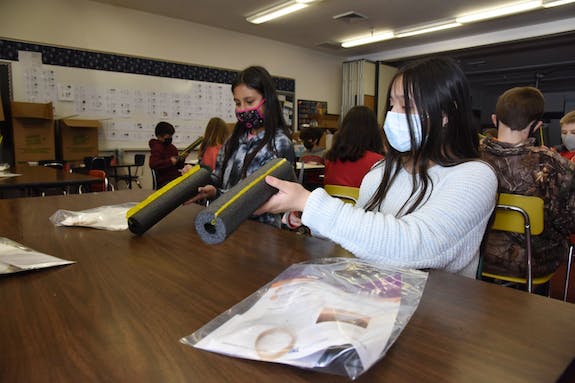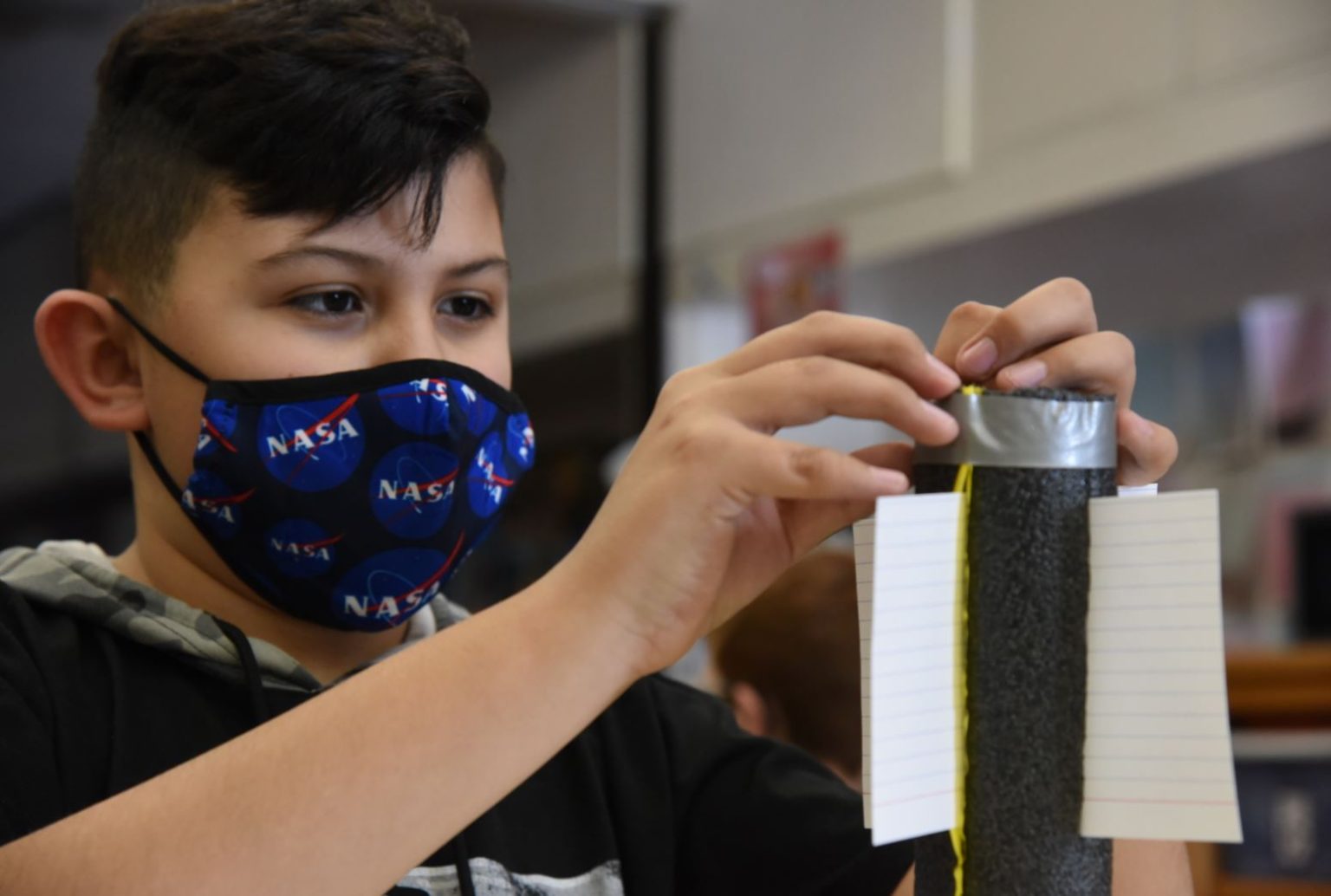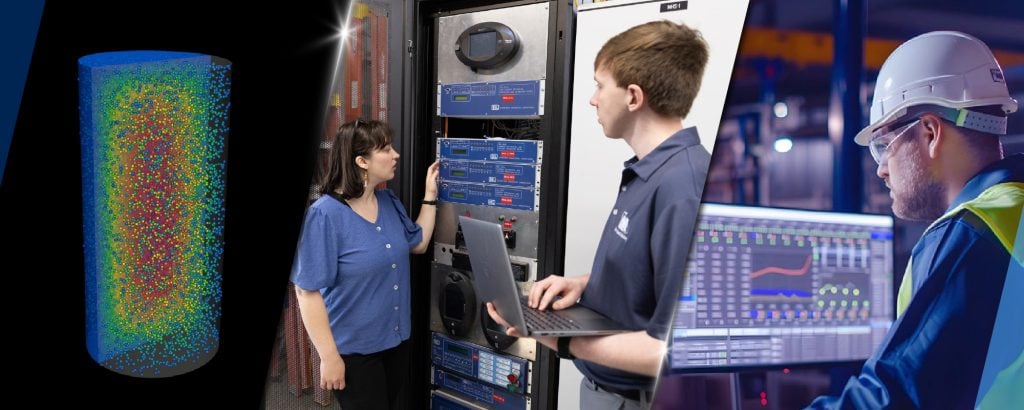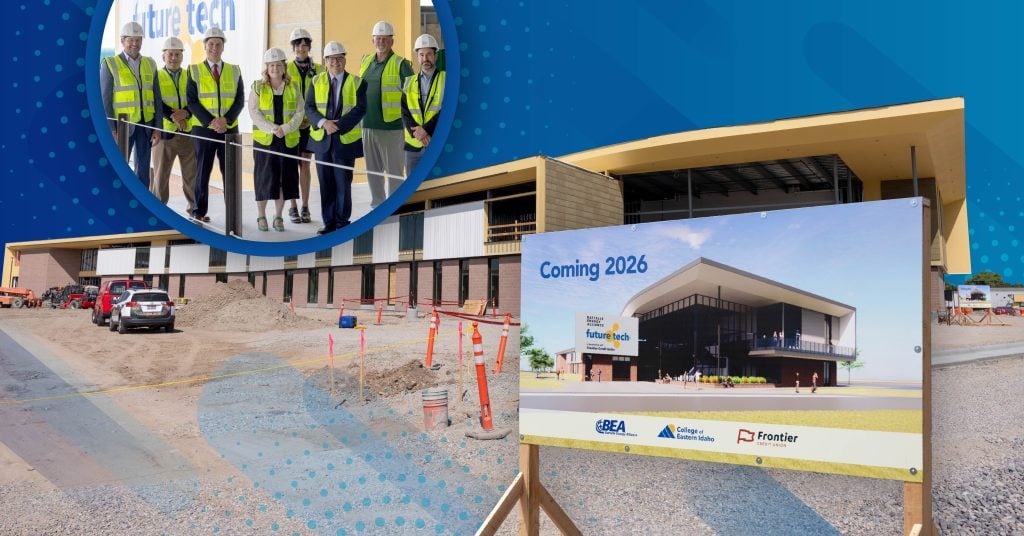For decades, this has held true in American schools: When the countdown on TV starts for a space launch or lander touching down, the class joins in.
“10 … 9 … 8 …”
So it was on the afternoon of Feb. 18 as students at Temple View Elementary in Idaho Falls, Woodland Hills Elementary and Sand Creek Middle School in Ammon, and William Thomas Middle School in American Falls joined thousands of others who tuned in as the NASA Rover Perseverance made a flawless landing on the surface of Mars around 2 p.m. MST.

For the teachers, it was the culmination of a hectic day. “Seeing Perseverance land safely was a welcome relief,” said Judy Bloom, a fourth-grade teacher at Temple View. She had a backup plan prepared for a crash. “Our motto in fourth grade is ‘mistakes are proof we’re trying,’” she said. “But it’s much better to see things go off without a hitch.”
“The more times you do it, the better it gets,” said Isaac Fazzio, a fourth-grader in Linda Kuharske’s class at Woodland Hills.
“Space is always going to be interesting to kids. Hands-on projects are always more fun, and a great way to get students involved,” Kuharske said. Her school’s hallways were festooned with posters and starry banners, and outside her classroom sat parked rovers made out of cardboard by teams in her class.
For help with her lessons and activities, Kuharske reached out to Idaho National Laboratory in October. In its effort to promote STEM education in Idaho schools, INL makes available a variety of lessons and materials. The big hit on Perseverance day were specially prepared kits for kids to build their own rubber band-powered foam rockets, with instructions on how to learn about such things as thrust and trajectory.
“I just think it’s wonderful that INL does this, because for a long time we didn’t have a lot of resources,” Kuharske said. “I just love that my students are so excited about the engineering design process. It encourages real life skills such as teamwork, communication and problem-solving.”
Space exploration inspires wonder and curiosity in all of us, said Jennifer Jackson, director of INL’s K-12 STEM Education program and previously a director of curriculum in Idaho Falls School District 91. “It’s exciting to celebrate the success of Perseverance and to share with students and teachers how teams of STEM professionals right here at INL contributed to the mission’s success. We’re all just so proud of this accomplishment and can’t wait to see what comes next.”
As far as space credibility is concerned, INL can lay claim to assembling and testing the multi-mission radioisotope thermoelectric generators (MMRTG) that power both Perseverance and Curiosity rovers on Mars, as well as a general purpose heat source-radioisotope thermoelectric generator on the New Horizons space probe that has sent photos to Earth from Pluto and the Kuiper Belt at the very edge of the solar system.

Making the generators is a team effort between INL and two other national labs. Oak Ridge National Laboratory makes the plutonium-238 power core elements and other specialized components of the systems before Los Alamos National Laboratory fabricates the plutonium oxide into pellets and encapsulates them into specialized iridium cladding, also produced by Oak Ridge. When the power elements reach INL, they are built into the MMRTG, which is put through a series of tests before being shipped to NASA at Cape Canaveral and put into the rover.
The next generator to be worked on at INL is slated to go into Dragonfly, a probe destined for Saturn’s moon Titan later this decade.
Before the lab sent Perseverance’s generator to Florida, it invited a group of Idaho Falls teachers to see it being finished at the Materials & Fuels Complex. “INL’s always helping us out with professional development opportunities and materials,” Bloom said. Likewise, the lab is eager for input. “Early in the year, Jennifer reached out and asked the fourth grade at Temple View if we would be able to help the INL with filming students asking questions and providing feedback for INL’s Nuclear Science Week 2020 celebration. We love INL!” she said.
There’s plenty more space work in store for INL. In mid-February, Battelle Energy Alliance, the lab’s contractor, announced INL would be partnering with NASA and the U.S. Department of Energy on a Dynamic Radioisotope Power System. Like the generators on Perseverance and Curiosity, it would create energy using Pu-238. Unlike them, however, it will use dynamic power conversion instead of thermocouples, allowing for a system more efficient. The system is being eyed for small lunar experiments, rovers or small spacecraft.
One of the reasons INL is so keen on STEM education in Idaho schools is the belief that it’s key to developing homegrown talent. It is possible that the kids shooting their foam rockets and shouting out the countdown on Feb. 18 might be INL’s space pioneers one day.
“I think the students are gaining ownership of these projects this way,” Bloom said. “Of course, they love the activities, but what’s even more important is seeing how what they’re learning in school can apply to what they want to do in the future.”





